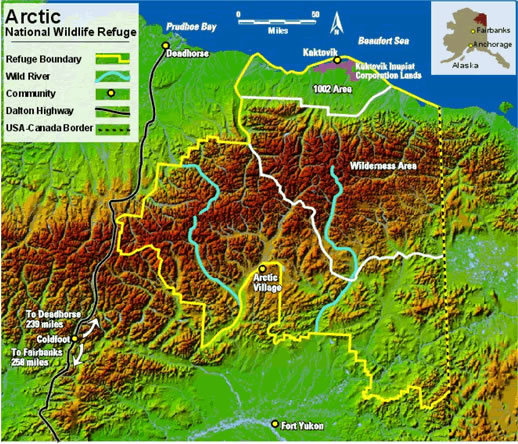Where do the candidates stand on EHS issues?
Issue: Oil Production – ANWR
By Nancy W. Teolis, J.D., BLR Expert
 Barack Obama: Barack Obama:Opposes drilling in the Arctic National Wildlife Refuge (ANWR) and is “committed to balancing environmental protection with development that means preserving sensitive public lands from exploration, like the Arctic National Wildlife Refuge, Pacific West Coast, Gulf of Maine, and other irreplaceable national landscapes.” President Obama supports an “all-of-the-above” strategyto develop all sources of energy – oil and gas, wind and solar, and new technologies that reduce U.S. dependence on oil. |
 Mitt Romney: Approves drilling in the ANWR and “would push to open new opportunities for America’s energy security, onshore and offshore, especially in the Arctic National Wildlife Refuge.” Mitt Romney encourages the cost-effective development of renewable energy that includes partnerships between traditional energy industries and emerging renewable industries. Mitt Romney: Approves drilling in the ANWR and “would push to open new opportunities for America’s energy security, onshore and offshore, especially in the Arctic National Wildlife Refuge.” Mitt Romney encourages the cost-effective development of renewable energy that includes partnerships between traditional energy industries and emerging renewable industries. |
The Facts: To Drill or Not to Drill
The fate of Alaska’s Refuge has been extensively debated in Congress for over 30 years since the passage of the Alaska National Interest Lands Conservation Act in 1980 (ANILCA), which doubled the size of the Refuge and designated most of the original range as Wilderness.
ANWR consists of approximately 19.3 million acres in the Alaska North Slope region and is managed by the U.S. Fish and Wildlife Service, a federal agency within the Department of the Interior. The southern part of ANWR is classified as Refuge, and the central area is classified as Wilderness as defined in the Wilderness Act of 1964. The subject of ongoing debate is the 1.5 million acre Coastal Plain known as the “10-02” Area, an important wildlife habitat and where substantial oil reserves are believed to exist.
Section 1002 of ANILCA outlined additional information that would be needed before Congress could designate the area as wilderness, or permit oil and gas development. Section 1003 of ANILCA prohibited the leasing or other development leading to production of oil and gas from ANWR unless authorized by Congress.

Image: http://arctic.fws.gov/shademap.htm
The Arctic Refuge is the only area on Alaska’s North Slope where petroleum development is specifically prohibited by Congress. The rest of the region is available for oil and gas development through administrative decisions by the Secretary of the Interior on National Petroleum Reserve-Alaska (NPR-A) and the Beaufort Sea, or by the Commissioner of the Alaska Department of Natural Resources on State lands and waters.
Oil and gas exploration and development in Alaska is increasing significantly in an attempt to meet national energy needs, and it is expanding beyond the traditional geographic areas most commonly developed. This expansion has raised concerns about potential degradation of the Arctic environment. Much of the debate is over whether to drill in the 1002 Area would result in economically recoverable oil, as it relates to global oil markets, weighed against the potential harm oil exploration would have on the land and natural wildlife.
In December 2011, the Administration formed a new interagency working group to coordinate energy development in Alaska. The Interagency Working Group on Coordination of Domestic Energy Development and Permitting in Alaska is led by the Secretary of the Interior. It is the goal of the group to support the increased development of the nation’s important resources, while ensuring that we do so safely and responsibly.
The Refuge continues to conduct ongoing biological studies of the 1002 Area as the development debate continues.
Additional Resources:
- Potential Impacts of Proposed Oil ad Gas Development on Arctic Refuge’s Coastal Plain
- Freeing Oil Production in Alaska
- Top Ten reasons to support ANWR development
- Analysis of Crude Oil Production in ANWR

Nancy W. Teolis, J.D., has been a Legal Editor for BLR’s environmental law publications since 1993, focusing primarily on underground storage tanks, pesticides, and hazardous waste-related requirements. Before joining BLR, she worked for the law firm Rudman & Winchell in Bangor, Maine, with an emphasis on asbestos exposure litigation. She received her law degree from Western New England University School of Law in Springfield, Massachusetts, and is a member of the Connecticut bar.
